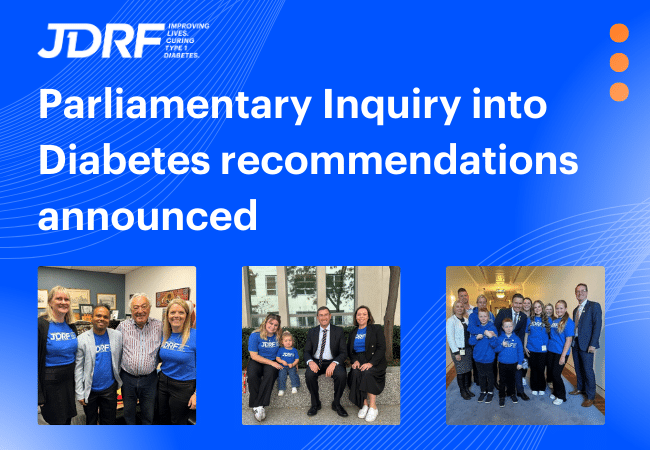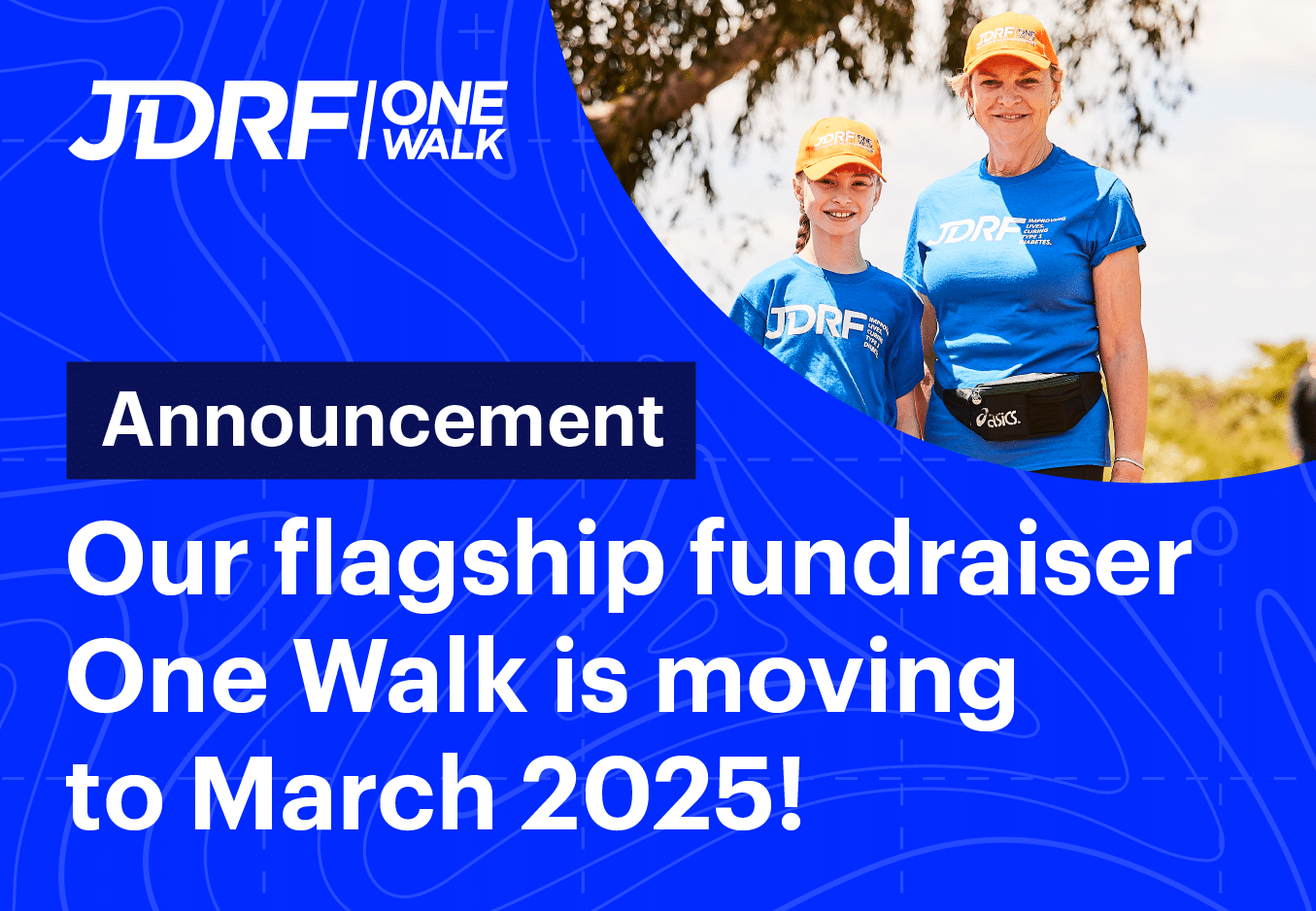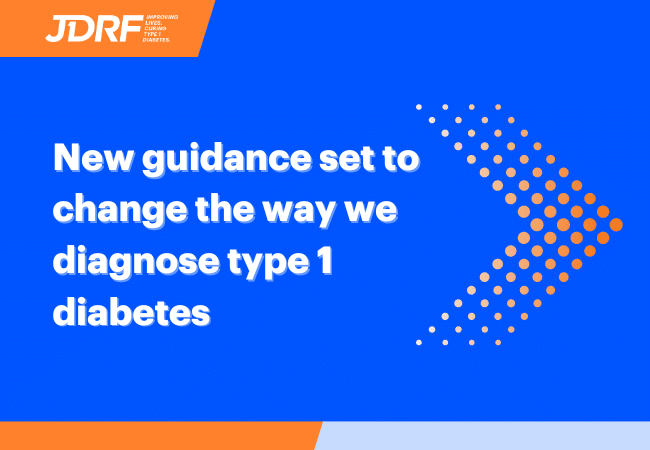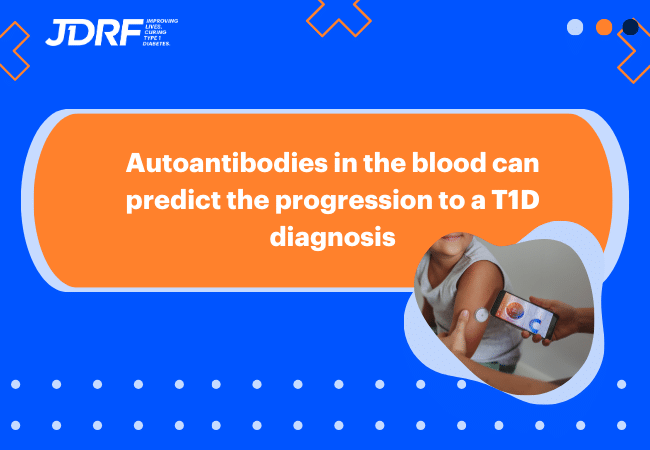Spotlight on fundraisers Robyn and Greg King

This National Diabetes Week, JDRF Australia is highlighting the stories of just some of the spectacular people in the T1D community and the unique experiences they’ve had while living with diabetes. This year, the focus is on highlighting the mental and emotional health impact of T1D.
Perth siblings Robyn King and her brother Greg had vastly different introductions to the world of type 1 diabetes (T1D).
While Robyn was diagnosed in South Africa at 8 years old, Greg’s T1D diagnosis came at 14 across the Indian Ocean in Perth.
Robyn’s local paediatrician and family, who had never encountered T1D before, had to upskill on all things T1D at breakneck speed. In contrast, when Greg started displaying symptoms, he was swiftly taken to Perth Children’s Hospital to be diagnosed and admitted.
Technology was less advanced in Robyn’s early T1D years. She was instructed to eat a strictly sugar-free diet, insulin pumps weren’t available and the type of insulin she used in her injections was far less sophisticated. Fast forward 11 years, and Greg was put on a pump as part of a clinical trial at the hospital – he’s never really known anything else.
Despite these differences, Robyn and Greg can agree on one thing: it’s the social and lifestyle challenges that come after diagnosis which they have in common.
The T1D lifestyle
T1D throws up various challenges at each age and stage of your life, and this dynamic duo believe we often take for granted just how pervasive these experiences are. They say that these moments are the ones we often look back and laugh at or remember most clearly.
Robyn reflects: “Years ago, our mum said she had a fresh realisation of the ways we have to constantly be thinking about our diabetes.”
“From having to turn around and drag everyone back to the hotel when I forgot to chuck my test kit in my bag for the day’s outing, to stopping on the side of the street while Greg quickly downs an orange juice when having a low, to watching me pull out my pump as I pick up a takeaway coffee on the run – diabetes impacts so many parts of our lives many people take for granted.”
While these disturbances can be completely second nature to people living with type 1 diabetes, they can also be quite onerous and frightening. Everyone experiences T1D in unique ways and where some might just take a new step in their stride, others could run into distress.
Here, Robyn and Greg were kind enough to share some of their own T1D challenges.
Robyn’s first insulin pump
When Robyn first got the pump, she encountered many problems with the new tech.
Leaving the hospital after a rocky start, Robyn burst into tears and wondered what she’d gotten herself into. Even though she’d lived with T1D for over 18 years, she suddenly felt out of control again.
Sometimes, the plastic tubing that delivers the insulin bent under her skin and she would feel horribly nauseous at work before realising her BGLs had skyrocketed to 25mmol/L.
Still, this wasn’t the last challenge she faced. Robyn then started getting rashes that spread all over her tummy due to an allergy to the plastic tubing – she now uses a steel needle inserter.
“I think the icing on the cake was when I was wearing a continuous blood glucose monitor and it malfunctioned on a DATE! The pump went into ‘emergency’ mode and it started beeping loudly. My poor date did not know what was going on and why there were strange loud noises coming from my direction,” Robyn says.
Despite these hiccups, Robyn says switching to the pump was a great decision in the end.
Greg’s scary return from South America
Greg has personal experience of the risks of low BGLs which occurred when he returned from a trip to South America.
He says: “Much to my mum’s delight, I hadn’t been recruited into a Colombian drug syndicate and had made it back in one piece. The night I got back I was exhausted, and I hadn’t eaten properly for the past 40 hours while travelling home. When I was sleeping my blood sugar dropped low, and unlike usual, I didn’t wake up.”
Greg’s low BGLs caused him to have a brief seizure, and he was transported to the ED in an ambulance for some tests.
As he reflects on the experience, Greg reveals it was a very scary episode for him and his family, and created an anxiety surrounding diabetes which he’d never experienced before. At one point, he began reading journal articles about the relationship between severe hypoglycaemia and cognitive impairment.
Even in the face of this complication and many other nuisances of T1D life, Greg says diabetes has never really been a burden for him. He often reflects on how far the management of diabetes has come and the possibility of a cure in the future, with ongoing research.
Now, it’s clear that T1D hasn’t stopped or hindered Robyn and Greg from achieving great things. Robyn has moved across Australia to Sydney, where she now works as Head of Social Impact at Canva. Greg is now a junior doctor in Melbourne, who is also completing his Ph.D. in pediatric cardiology. Both Robyn and Greg work with JDRF Australia to fundraise at our annual One Walk events around Australia.
Managing mental health
In celebration of National Diabetes Week, here are their top three tips for looking after your mental health in the face of diabetes distress and complications:
- Diabetes is challenging, but adversity makes us stronger. Focus on what you can still do when having diabetes, not what you can’t (which isn’t much really!)
- It’s so normal to have a bad day or moments where you’re just totally over having diabetes – we all do! Have a good vent and get it out of your system.
- Make the most of all the amazing medical services and wrap-around support we have for T1 diabetics in Australia – there are so few countries where the care is this great and it always helps you stay accountable and up-to date with the latest research.
To learn more about type 1 diabetes and mental health this National Diabetes Week, check us out on Facebook or Instagram.




